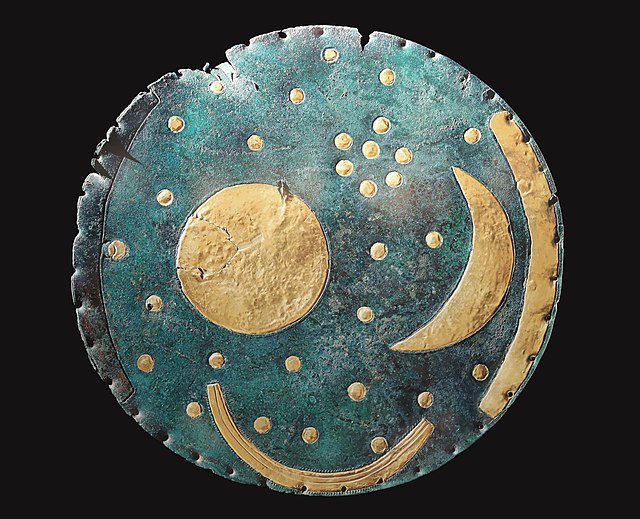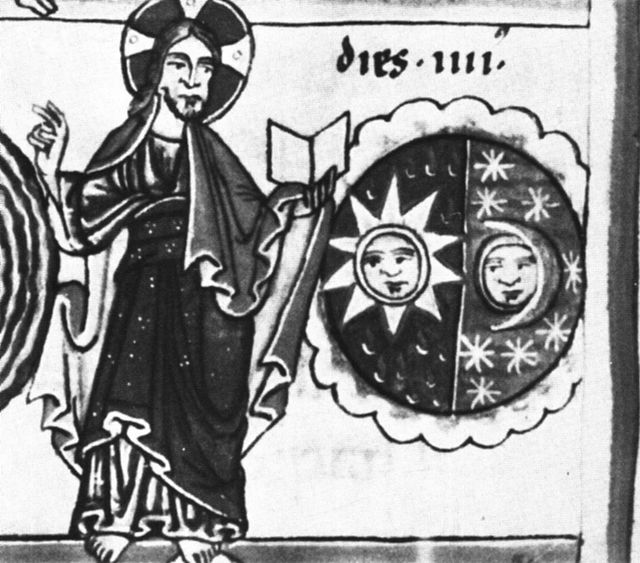The Vergina Sun, also known as the Star of Vergina, Vergina Star or Argead Star, is a rayed solar symbol first appearing in ancient Greek art of the period between the 6th and 2nd centuries BC. The Vergina Sun proper has sixteen triangular rays, while comparable symbols of the same period variously have sixteen, twelve, eight or (rarely) six rays.
A relief sculpture depicting Helios with a rayed halo (Athena's temple, Ilion, early 4th century BC)
A hoplite with an eight-pointed sun on his left shoulder. Side A of an Ancient Greek Attic red-figure belly-amphora, 500–490 BC, from Vulci, Italy. Staatliche Antikensammlungen, Munich, Germany.
A relief sculpture depicting Mithra with a radiate solar crown (Taq-e Bostan, ca. 4th century CE)
Achilles and Ajax playing a board game. Eight-pointed sun symbols are depicted on their cloaks. Amphora by Exekias, 6th century BC, Vatican Museum.
A solar symbol is a symbol representing the Sun.
Common solar symbols include circles, crosses, and spirals.
In religious iconography, personifications of the Sun or solar attributes are often indicated by means of a halo or a radiate crown.
Helios with a radiate halo driving his chariot (Ilion, 4th century BC; Pergamon Museum)
The solar disk, crescent Moon and stars as shown on the Nebra sky disk (c. 1600 BC)
Sun (ten rays) and Moon with faces in a manuscript miniature illustrating the fourth day of creation (12 C.)
Sun with a face and eight (alternating triangular and wavy) rays (fresco in Larbey, France, dated c. 1610)








